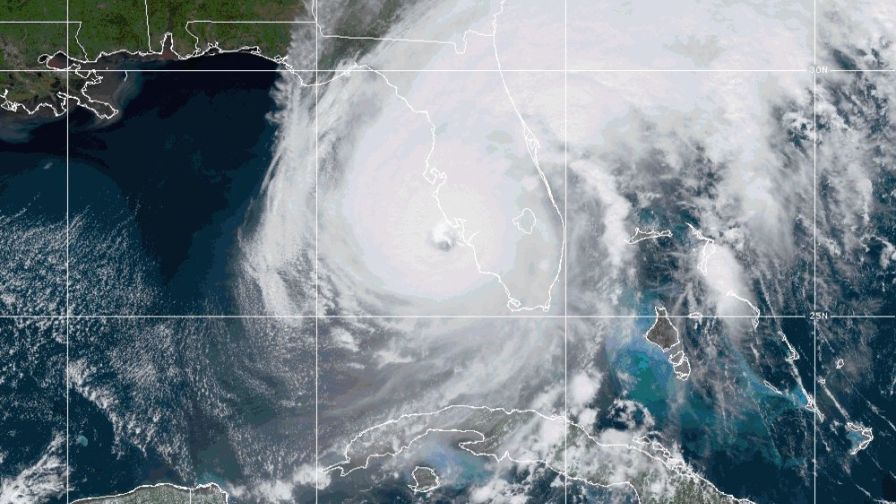Final Hurricane Ian Numbers Are In: $1 Billion-Plus in Agriculture Losses

Photo credit: NOAA
University of Florida economists, following months of gathering and analyzing data, have refined the estimate of agricultural losses due to Hurricane Ian: $1.03 billion. This number is an estimate of the total value of seasonal crops, livestock, nursery, and aquaculture products that will not be harvested or marketed as a result the Category 4 storm.
Hurricane Ian made landfall on an island 20 miles west of Fort Myers on Sept. 28, 2022, and brought damaging winds and flooding to millions of acres of agricultural lands as it swept across the Florida peninsula.
The University of Florida/Institute of Food and Agricultural Sciences (UF/IFAS) Economic Impact Analysis Program (EIAP) published its detailed report, “Estimated Agricultural Losses Resulting from Hurricane Ian,” this past week. This report follows up on a preliminary assessment released Oct. 18, 2022, that estimated between $787 million and $1.56 billion in losses.
A portion of the $1.03 billion loss estimate might be offset by insurance or other risk management tools available to producers, says Christa Court, Director of the EIAP and an Assistant Professor in the UF/IFAS Food and Resources Economics Department.
“For example, if a grower was expecting to harvest $10 million in crops this year and the storm destroyed $6 million worth, we report a $6 million loss. That farmer might recoup some of that through insurance, but we don’t have a good way of accounting for that in our estimates,” Court says.
The latest report breaks down the $1.03 billion in final estimated losses by commodity group:
- Citrus: $247.1 million
- Vegetables and melons: $204.6 million
- Greenhouse and nursery: $195.4 million
- Non-citrus fruit: $137.7 million
- Field and row crops: $130.2 million
- Livestock and animal products: $119.8 million
Court says that while this report presents a clearer picture of Hurricane Ian’s impacts to Florida agriculture, it does not include costs associated with asset damages or production losses that might occur in future seasons.
“For example, we are not able to measure things such as the cost of repairing or replacing damaged structures or equipment, replanting perennial crops, or replacing livestock,” Court says.
Court also points out that Hurricane Ian’s impacts to Florida agriculture have been further compounded by Hurricane Nicole and hard freezes that occurred in January 2022 and December 2022.
“The same areas affected by Ian were hit, in some cases, by multiple weather events that each would have affected the agricultural yield on their own in an ordinary year,” Court says. “Our survey only covered damages and losses from Hurricane Ian, so this report is not a view of the total impact to agricultural production of all 2022 events that have impacted the sector.”
To arrive at agricultural loss estimates, the UF/IFAS Economic Impact Analysis Program uses multiple layers of data gathered from multiple sources. The complex process includes overlaying the storm’s path, windspeeds, rainfall, and flooding with the acreage, value, and seasonality of the agricultural commodities grown or raised in the counties affected by the storm. This overlay is combined with information about how the event affected those commodities. Finally, the economists refine their estimates using survey responses submitted by agricultural producers and Florida Cooperative Extension faculty.
Continue reading at ifas.ufl.edu.









